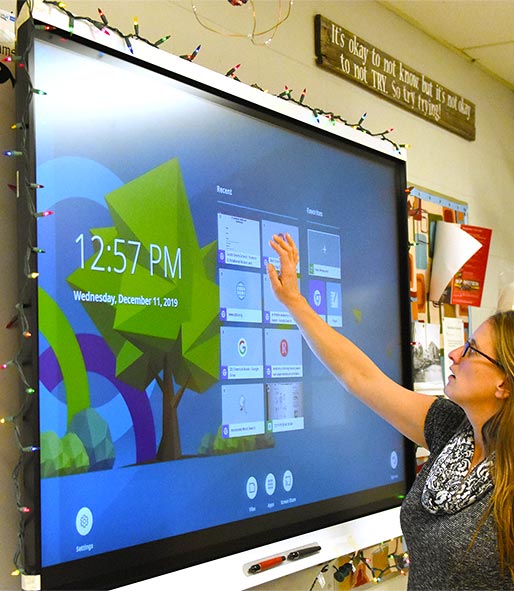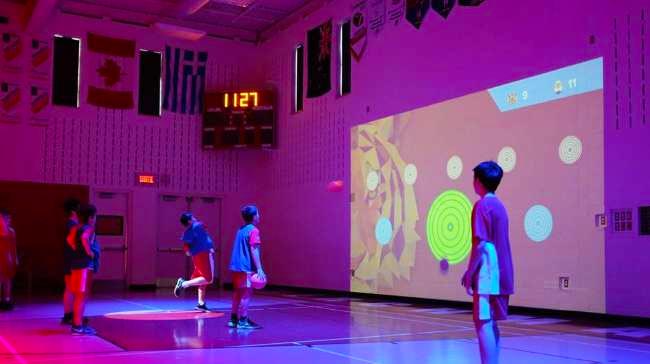Do students learn better with technology?
How multimedia can improve student comprehension and learning outcomes.

The advancement of Education Technology (EdTech) is giving Educators new creative license over the development and modification of pedagogies.
As audiovisual equipment has grown increasingly affordable and easy to use, teachers and schools are developing multimedia learning environments that are adaptable to individual learning styles and environments.
Likewise, these new tools are giving teachers and educators effective ways of improving student reading comprehension by combining visual and verbal cognitive processes.
What is EdTech?
Education Technology (EdTech) is an area of technology devoted to facilitating and enhancing learning and learning outcomes with the use of technology.

Why is EdTech important? Why does EdTech matter?
When audiovisual technology is incorporated into learning environments, educators can create learning experiences and outcomes that aren’t easily attainable through traditional education materials and processes.Several large-scale studies spanning hundreds of students and a number of schools revealed something interesting. Where AV and education technology is incorporated into learning experiences, improved academic outcomes are achieved (Mohammed, 2019).
Conversely, similar classrooms that didn’t incorporate technology into their learning performed worse in comparison (Mohammed, 2019).
Furthermore, hundreds of localized examples also revealed that technology successfully improved learning experiences and outcomes (Mohammed, 2019).

One study, (Issa et al., 2013), even identified the differences in learning outcomes between two groups of beginning medical students where multimedia was used versus more traditional learning methods. One group learned from a traditional slideshow lesson, where the other were given lessons modified by multimedia design principles.
On a transfer test administered 4 weeks later, students in the multimedia group outperformed those in the standard grouping, even though the content was the same (Issa et al., 2013).
But how does technology make learning easier exactly? Do students learn better with technology? What are the benefits of a multimedia-based education?
The 5 advantages of technology in learning / multimedia learning
1. A more in-depth understanding of concepts and material
The rich, multi-sensory stimuli provided by audiovisual media positively affect perception, identification, classification, and conceptualization of information.
Students are more easily able to identify, classify, understand and draw conclusions about concepts when engaging in multimedia learning.
The academic improvement becomes even more apparent when students with low scores are taught in multimedia-based learning environments (Issa, Cox, & Killingsworth, 1999).
2. Improved attitude toward course material
Researchers, Altınısık & Orhan (2002), Woodrow and Mayer–Smith (2000), Mayer–Smith & Pedretti (2000) and Geban, Ertepınar, Yılmaz, Altın and Sahbaz (1994), agree that teaching within multimedia-based learning environments positively impacts student attitudes.
When AV technology is used as part of the teaching/learning process, students exhibit positive attitudes toward the course and course material. Conversely, when taught in more conventional settings, students exhibit less favourable attitudes.
3. Better problem solving
Multimedia learning environments help to equip students with the tools and skills needed to quickly and easily identify and resolve problems.
This is particularly apparent when compared with more traditional learning methods and environments.

4. Accessibility of information and ease of dissemination
Teachers, educators and students are all utilising powerful technology (computers, tablets, phones and the internet) as core pillars in their learning processes.
When learning environments successfully integrate those technologies with appropriate classroom infrastructure, teachers and students are able to share and engage with information across a range of media quickly and easily.
Interconnected technology allows teachers and educators to expand their pedagogy, re-imagine their teaching processes, and create an environment that supports class-wide participation.
5. Multi-sensory engagement and retention
Technology allows teachers and educators to create vibrant and engaging multimedia learning environments.
This multi-sensory engagement not only helps to address the disparate ways in which children learn, but works to capture student attention and impact learner understanding (long-term transfer and long-term retention).
Likewise, as the human brain expends a large portion of its processing power on visual elements, when we combine images, video and audio with traditional text-based learning, student attention and retention significantly increases.

Want more information?
Sources
Beydoğan, H.Ö. and Hayran, Z. (2015). The Effect of Multimedia-Based Learning on the Concept Learning Levels and Attitudes of Students. Eurasian Journal of Educational Research, 15(60), pp.261–280.
Chioran, A. (2016). 5 benefits of multimedia learning. [online] Nuiteq.com. Available at: https://www.nuiteq.com/company/blog/5-benefits-of-multimedia-learning.
Issa N, Mayer R, Schuller M, et al. (2013) Teaching for understanding in medical classrooms using multimedia design principles. Medical Education (47): 388–396.
Mayer, R. (2019). How multimedia can improve learning and instruction. Impact Journal of the Chartered College of Teaching. Available at: https://bit.ly/3rXRXpb
Mohammed, S. (2019). Is technology good or bad for learning? Brookings. Available at: https://brook.gs/2NsRhJy



